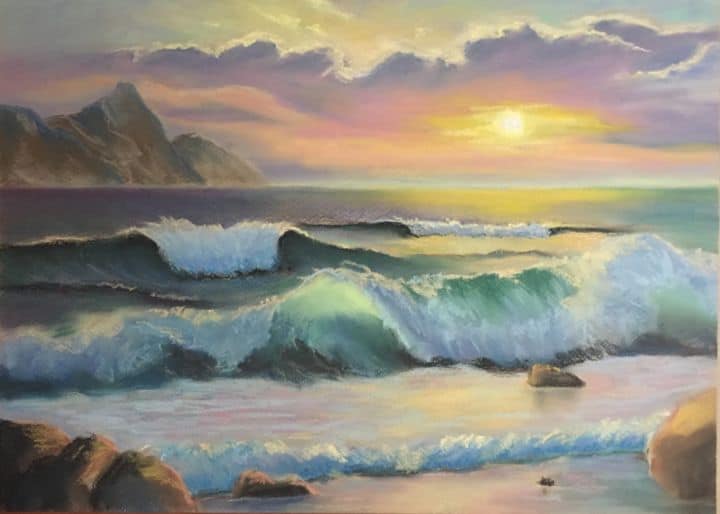Pastels are sticks of pure pigment (finely ground) combined with a binding agent. Pastels were invented in the 15th century, and gained popularity in 18th century Europe. The texture of pastels can be chalky or oily depending on what the pigment is mixed or bound with. Pastels continue to be popular because they offer vibrant colours and no drying time (except for fixative). There is an inherent ‘smudge’ factor when using soft pastels so caution should be used when placing your hand on your pastel paper – it can (and will) smudge, and don’t forget to apply a fixative.
Pastels are most commonly applied to surfaces with a tooth (texture) in layers, allowing for excellent blending and shading. Paper designed especially for pastels and charcoals is readily available in a wide variety of sizes as well as colours. The addition of coloured pastel/charcoal paper gives the artwork an additional depth!

Student grade pastels are usually relatively inexpensive; however, with the reduced price comes reduced permanence and lightfastness. Some more inexpensive brands of pastels labelled ‘soft’ may be anything but soft. In general, student-grade pastels can be useful for professional artist when doing quick studies as well as beginners learning how to use pastels.
Types of Pastels:
Oil pastels have intense colour but are more difficult to blend than soft pastels; they also do not require fixatives to prevent smudging on finished pieces. These pastels can be blended or thinned by brushing thinners.
Soft pastels tend to have a more vibrant colour as they have a greater proportion of pigment and less binding agent. These pastels require a fixative to prevent smudging on finished pieces. Soft pastels can be purchased in either full sticks (longer and thinner) or half sticks (shorter and fatter). Soft pastels are sharpened by using a sandpaper pad – or, if you’re confident enough, you can use a knife. Be careful as pastels can splinter when cut with a knife!
Pastel pencils are just that – a pastel stick in a wooden casing. These are great for detail work or adding sharp lines to traditional pastels. These can be sharpened by using a standard pencil sharpener.
Conte crayons are compressed sticks of powdered pigment (or chalk mixed with pigment) using wax or clay-based binding agent. These are very affordable and now come in a wider variety of colours. Conte crayons have a long history and are VERY popular to this day. Usually, you can find sets with precisely the colours you want – landscape, portrait, etc.
Watersoluble pastels – these are the newest kid on the block. Water-soluble pastels are basically a soft pastel bound with a water-soluble binder, giving the artist the ability to blend colours with a wet paintbrush, much like watercolour pencils. How cool is that?
